A Simulationist's Framework
for Business Analysis
Part 09a (short version):
How to Unsnarl a Problem
When You're Dropped In the Middle of It
R.P. Churchill
CBAP, IIBA-CBDA, PMP, CSPO, CSM, CSDLean Six Sigma Black Belt
www.rpchurchill.com/presentations/BAseries/09a_Unsnarl www.rpchurchill.com | Portfolio | Presentations
30 Years of Simulation
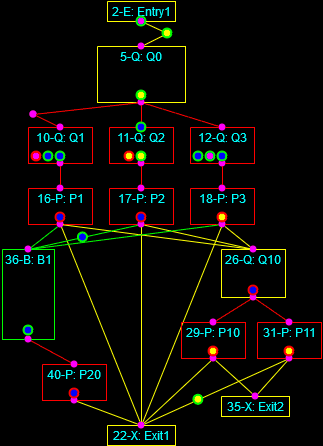
Continuous simulation of the heating of a square billet and Discrete-Event simulation of a multi-phase process.
30 Years of Simulation
|
Industries
|
|
|
The Framework:
- Project Planning
- Intended Use
- Assumptions, Capabilities, and Risks and Impacts
- Conceptual Model (As-Is State)
- Data Sources, Collection, and Conditioning
- Requirements (To-Be State: Abstract)
- Functional (What it Does)
- Non-Functional (What it Is, plus Maintenance and Governance)
- Design (To-Be State: Detailed)
- Implementation
- Test
- Operation, Usability, and Outputs (Verification)
- Outputs and Fitness for Purpose(Validation)
- Acceptance (Accreditation)
- Project Close
The Framework: Simplified
 Intended Use
Intended Use Conceptual Model (As-Is State)
Conceptual Model (As-Is State) Data Sources, Collection, and Conditioning
Data Sources, Collection, and Conditioning Requirements (To-Be State: Abstract)
Requirements (To-Be State: Abstract)- Functional (What it Does)
- Non-Functional (What it Is, plus Maintenance and Governance)
 Design (To-Be State: Detailed)
Design (To-Be State: Detailed) Implementation
Implementation Test
Test- Operation, Usability, and Outputs (Verification)
- Outputs and Fitness for Purpose (Validation)
Engagement vs. System vs. Solution
The engagement is what we do to effect a change that serves customers.

The system is what we analyze and either build or change to serve customers.
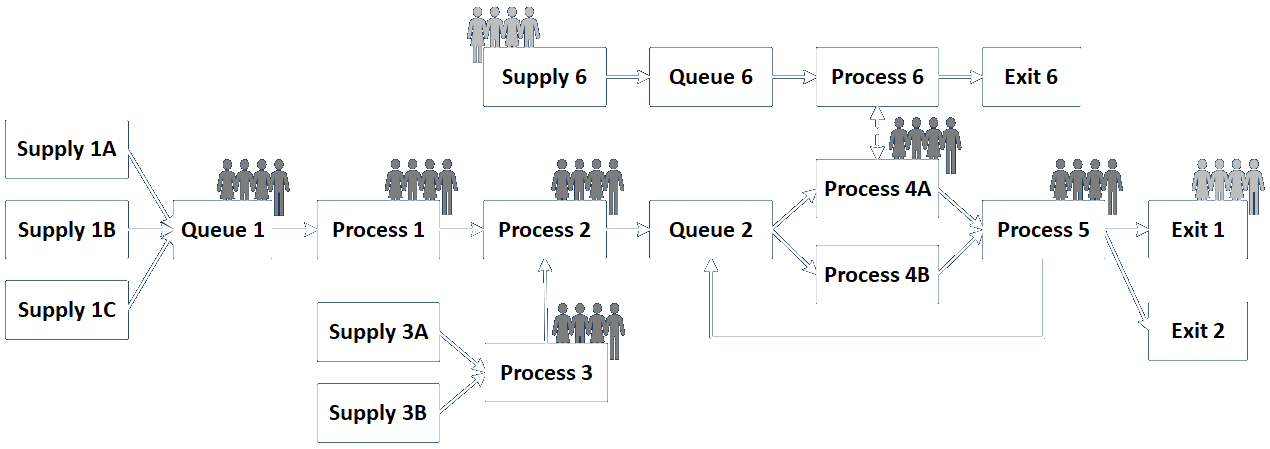
The solution is the change we make to serve customers.
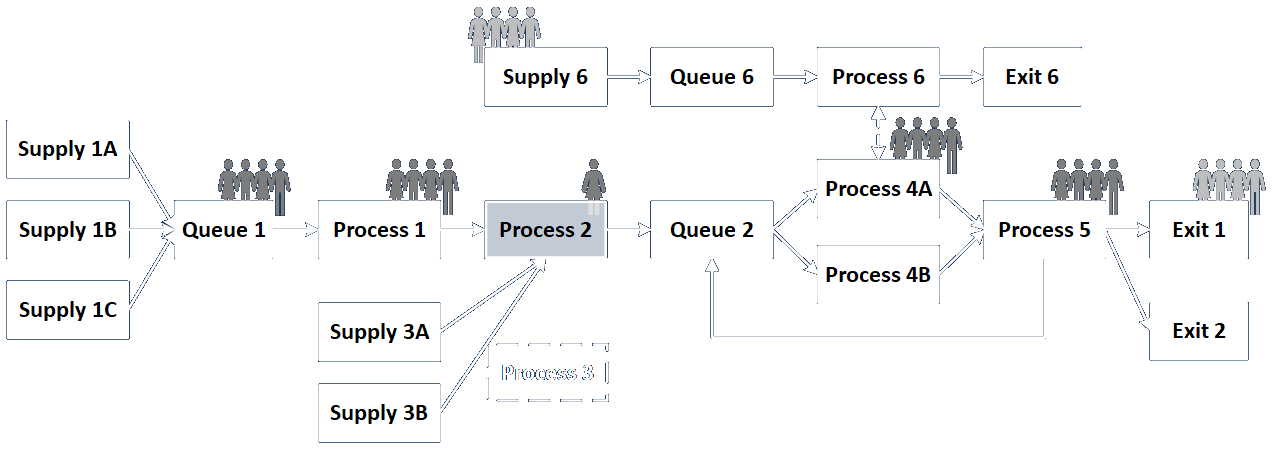
Framework Summary
All of these things happen - even if any individual doesn't see them.
The more everyone understands about the process and how they fit into it, the better off the whole organization will be.
If this is done properly, the problems (like UI/UX) practically solve themselves in some cases. (See Solving the Problem Abstractly.)
Specific expertise is always valuable, but you can't realize its greatest benefits if the basic process and understanding are disorganized.
Limited View of Engagement Process

Every participant — especially BAs — might not be participating in every phase of an effort, and so may miss out on some background and some follow-through.
Limited View of Parallel Processes (e.g., SAFe)
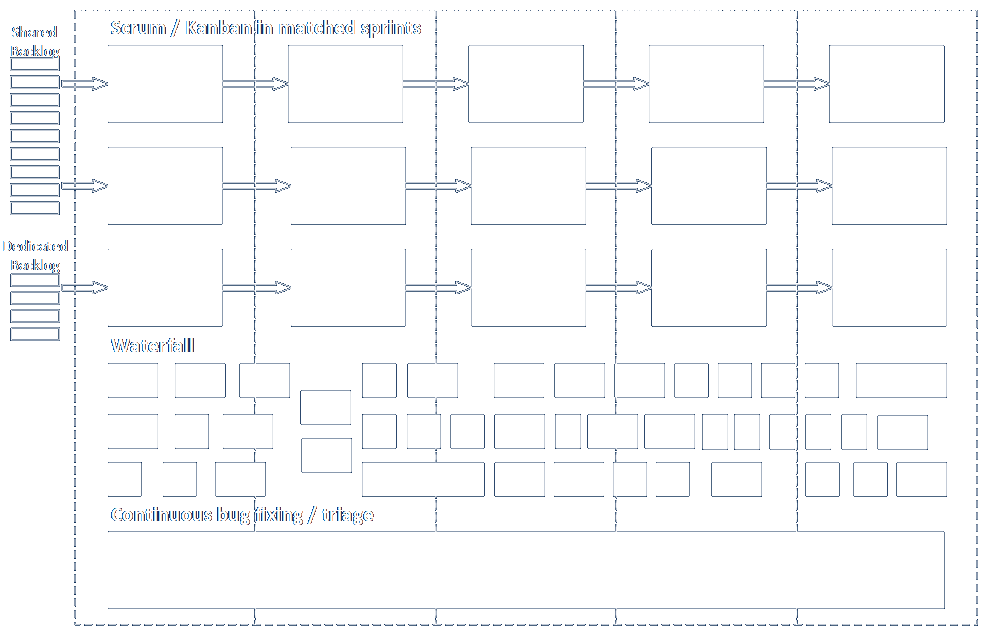
Every participant might not be aware of everything happening in other teams, work efforts, integrations, and so on.
Different Solution Concepts
Types of Solutions
- IT: web, microservices, distributed, client-server, HPC, desktop, mobile, embedded, IOT
- Physical Process: retail, manufacturing, service, transportation, utility, hospitality, medical
- Information: financial, media, research, education/training, communications, entertainment
- Hybrid: combinations of above
- Process vs. Product: characteristics of doing something or characteristics of being something (especially for physical items)
- Creation/Greenfield vs. Improvement: improvement encompasses rearrangement, substitution, compression, and automation
- Scope and Scale of Problem: may vary widely from very small and limited to very large and far-reaching
Different Engagement Concepts

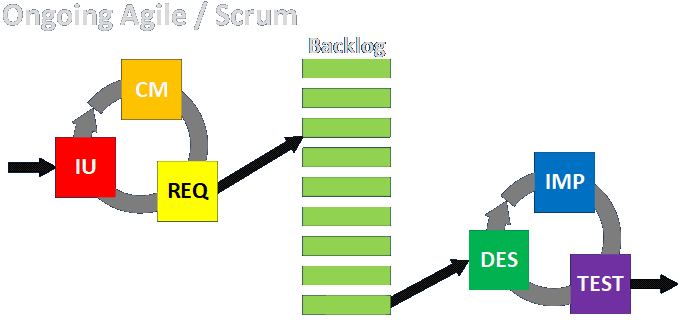

|
|
Link to detailed discussion.
Different Engagement Concepts (continued)



|
|
Link to detailed discussion.
What To Do? Questions and Razors
Are there champions for the effort?
- What are they like and what do they want?
- How much and how well do they inform their people?
- How much do they empower their people?
What To Do? Questions and Razors continued
How much is the effort empowered to look at or change?
- Who has it been arranged to talk to?
- Can you talk to people or research independently? (It's not always bad if you can't; people's time is valuable.)
- Are there any areas you aren't allowed to investigate or technologies or solutions you aren't allowed to discuss?
- Do you know the scope and scale of the effort, and its boundaries and limitations?
- Will managers and other stakeholders change their views or actions based on your findings and feedback?
What To Do? Questions and Razors continued
How much do you know as a BA?
- ...about the business, industry, technical tools, other job functions, competitors, data, BA practice, etc.
- How comfortable are you in talking to people, taking initiative, and recommending change?
- How persistent are you in obtaining (demanding!) clarification and iterative review?
- How flexible and adaptive are you?
What To Do? Questions and Razors continued
How much do other practitioners know?
- Are there iterative cycles of review and feedback to ensure everything is covered and people know what they need to know?
- Are there internal or external communities of practice that can be started or leveraged? (Some of this will depend on the size of the organization.)
- Do people need training? Is it available? Is it effective? Do people want it?
What To Do? Questions and Razors continued
Is the effort focused on incremental changes, quantum leaps, or something in between?
- Is the scope and scale well defined, and do all the practitioners and stakeholders know what is intended?
- Does everyone know what the goal is?
What To Do? Questions and Razors continued
What inspired the effort?
- Strengths: leveraging or improving existing capabilities
- Weaknesses: general unease or specific problems and issues? (There's never enough time to do it right but there's always enough time to do it over...)
- Opportunities: take advantage of new technologies, methods, gaps, market niches, or competitor missteps
- Threats: external competitive or regulatory threats
- These points of view make up a SWOT analysis.
- New people may want to shake things up.
What To Do? Questions and Razors continued
How do you prioritize which activities and qualities you address first?
- Find out where most of the costs or resources are going.
- Profiling criteria can be related to speed, time, money, materials, personnel, memory/storage usage, usability, understandability, etc.
- Specific user or customer observations and frustrations may shed light on some of the above items. The customer may not always be right, but they always have a point.
What To Do? Questions and Razors continued
Does everyone have a clear picture of what's going on now? Does anyone?
- Get guided tours by experts and consult existing documentation (drawings, data, manuals) if available.
- If not, then nothing beats finding out what's going on...
- ...so let's talk about process mapping! (...and other forms of discovery and organization.)
This presentation and other information can be found at my website:
E-mail: bob@rpchurchill.com
LinkedIn: linkedin.com/in/robertpchurchill